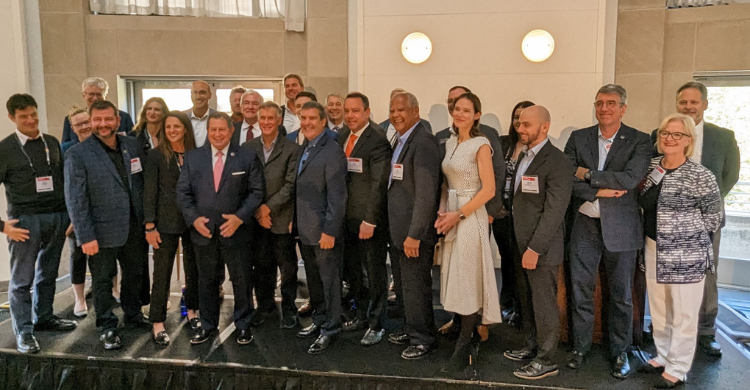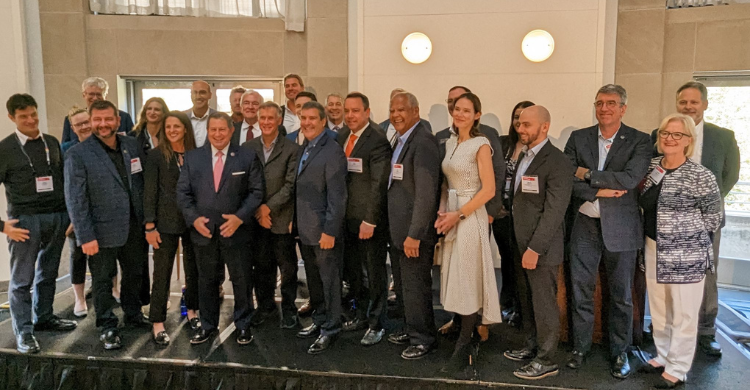Marketing KPIs & Benchmarks for 2026
We work with B2B leaders every day who have extensive marketing data, but don't know what to make of it. It's hard to know you're on track to meet...
3 min read
Michele Nichols Thu, Oct 05, 2023

This past week, 150 leaders of photonics company leaders met with government agency leaders to discuss policy and initiatives critical to:
Eric Lim, Interim CHIPS R&D Program Director, NIST, shared the CHIPS Act’s next milestones, including the recent announcement of Subramanian S. Iyer as the director of the National Advanced Packaging Manufacturing Program. As participants expressed frustration with the roll-out (“Is it real?” and “Let’s get on with it.”), moderator David Isaacs, VP, Government Affairs, Semiconductor Industry Association, likened it to “building a plane while we fly it.” Selecting an independent Board of Trustees is the next milestone in the rollout of the CHIPS Act. This will help to ensure that fab investments are in keeping with the needs of the US private sector and help to address the supply chain challenges that have impacted product ramp-up in the sectors optics and photonics serve, including lasers, automotive, medical device/life science, and others.
Today, US fabs are 30-40% higher cost than competitors. The design will need to be a significant differentiator. Another important factor to success is private funding—there are fewer venture capitalists in microelectronics than in software, and private sector investment is critical to leverage government dollars.
Eric Lim states, “We can’t block our way to success. We need to outcompete, out-invest.”
Other concerns raised:
Looking to expand in emerging markets or applications? Request a consult.
The most diverse panel of the day was a great representation of the state of the quantum industry—this rapidly emerging market will require the intersection of many disciplines and a diversity of thought. Presenters agreed that the commercialization of quantum technologies will demand:
The DOE is working to bring investment through tech hubs in non-traditional regions. Forty-four awards have been given for planning grants, two of which were in quantum technology, given to Montana and the University of Connecticut.
Like all other technologies in discussion today, including a panel on directed energy led by Robert Walker of Leonardo Electronics, quantum technologies will require lower SWAP-C, sustained investment to commercialize, and a strong supply chain. The industry shares the government’s frustration in establishing a shared goal and understanding of requirements, as these are often shared only 1:1 under NDA.
Presenters and attendees agree that the US needs a sustained investment in R&D to maintain its competitive advantage. Industry is doing its part—the current baseline for private companies in this industry is 5% of revenue toward R&D and new product development, and market leaders benchmark at 20%. The industry showed up in full force to send the message that we’re ready.

With the support of the DoD and NY congressional leaders, MCC’s Alexis Vogt joined the stage to announce an award critical to the continuation of the MCC optics program and to participate in a panel discussing the workforce gaps and requirements to meet the needs of these emerging industries.
All agree that increasing the number of women and underserved students in STEM plays an important role in filling the gap. One attendee noted that current financial aid has sure increased the number of English majors, but isn’t addressing the problem. DoD’s Smartscholarship.org provides full tuition to anyone in a strategically important discipline. DOEStem.org and DODStem.org help to provide tools and curriculum to engage vulnerable younger students in STEM—like the hit of the day, an open-source design for 3D printing a 100x smartphone microscope, and a culturally responsive curriculum for its use.
.png?width=750&height=390&name=Iphone%20microscope%20(1).png)
Our takeaways for tech companies looking to grow and change to meet emerging demand:
Thank you to SPIE for hosting an important conversation, and to all those who shared their ideas to inform policy that will be important to us all.

We work with B2B leaders every day who have extensive marketing data, but don't know what to make of it. It's hard to know you're on track to meet...

Get a Competitive Edge with Comprehensive AI & GEO Insights If you are beginning to notice an erosion in organic traffic and leads, it may be time to...

Updated on 6/10/24 The 80/20 rule or Pareto principle, is a long-standing business strategy that a lot of companies are applying right now to...